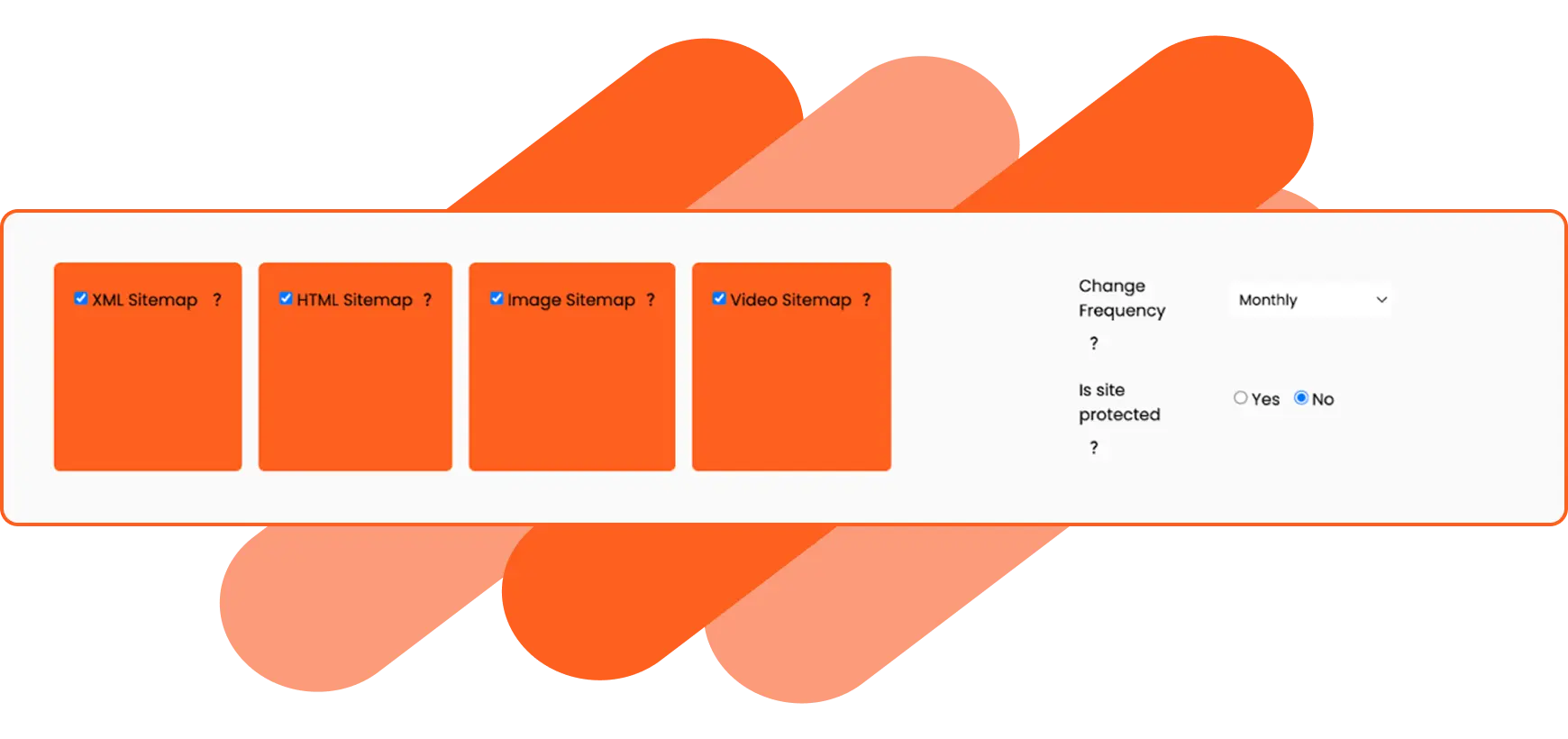Sitemap generator offers the following:
 Regular webpage sitemap
Regular webpage sitemap
 Image sitemap
Image sitemap
 Video sitemap
Video sitemap
 Auto generation
Auto generation
Get To Know More About The Sitemap Generator
The priority is set between 0.1 and 1.0. If the page can be accessed with a single click, its priority will be 1.0. If it is two or three clicks away, the priority may be 0.9 and 0.8, respectively. Other priority values are calculated similarly.
Yes, two further steps must be completed according to the Google Image sitemap standards (https://support.google.com/webmasters/answer/178636).
- 1. The hosting website must be validated in the Search Console.
- 2. The domain's robots.txt file does not prevent crawling of the hosting website.
An XML (Extensible Markup Language) sitemap is used to detail all URLs on a website.
An HTML sitemap enables users to effortlessly traverse a website. An HTML sitemap helps lost human users discover a page on your website.
The image sitemap comprises the domain's unique image URLs to avoid duplicate photos across your pages. The image sitemap is contained in a separate XML file.
The 'Available images' are counted only for the successful image links, whereas the image sitemap may contain a few redirected URLs for the images and hence it may differ.
A video sitemap has all the additional information about any video content hosted on the webpages of the domain.
Elite Site Optimizer provides four different types of sitemaps. XML sitemap,HTML sitemap,Image sitemap,Video sitemap
The columns displayed in the table are Date: The date on which the sitemap was generated. Domain: The domain or website URL for which the sitemap was generated. Type: The type of sitemap generated for the domain.
- Total URLs: The total no. of URLs crawled for the domain.
- Valid URLs: The total no. of valid URLs crawled for the domain.
- Invalid URLs: The total no. of invalid URLs (Disallowed, No-robot, No-index URLs) present in the domain.
- Change: The change of URL count comparing the previously generated sitemap and recently generated sitemap for the domain.
- Total Time: The total time taken to generate the specific type of sitemap for the domain.
- Action: It will display as "In -Progress" when the sitemaps are being generated and the Download button will be displayed when the sitemaps generation is completed. Clicking on the download button will allow you to download the specific type of sitemap for the domain.
By including an XML sitemap on your web server, search engine crawlers (such as Google) can determine which pages are present and which have recently changed, allowing them to explore your site accordingly.
Sometimes, the website's server firewall, defenders, and security plugins implemented may affect Elite Site Optimizer from crawling the website and generating reports. To avoid this situation, Elite Site Optimizer's crawler IPs should be whitelisted in the website's server firewall, defenders, and security plugins implemented for the website.
Please add the following IPs in your firewall:
- 1) 44.240.233.25
- 2) 35.82.149.10
identity or website?


